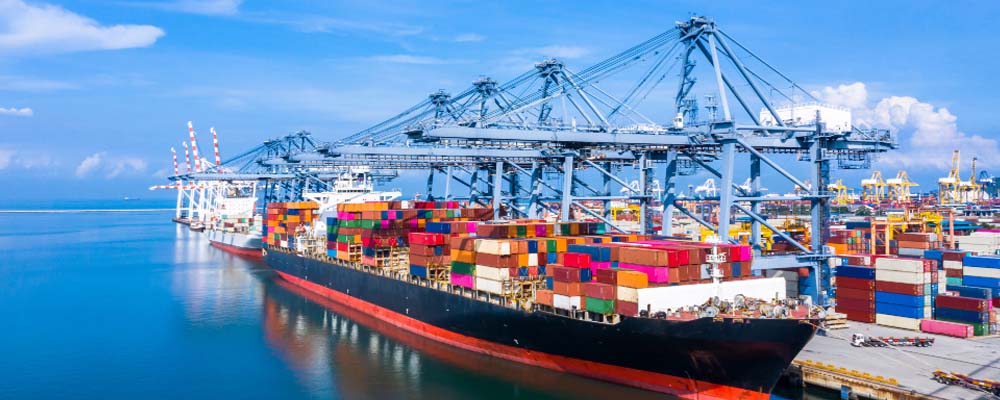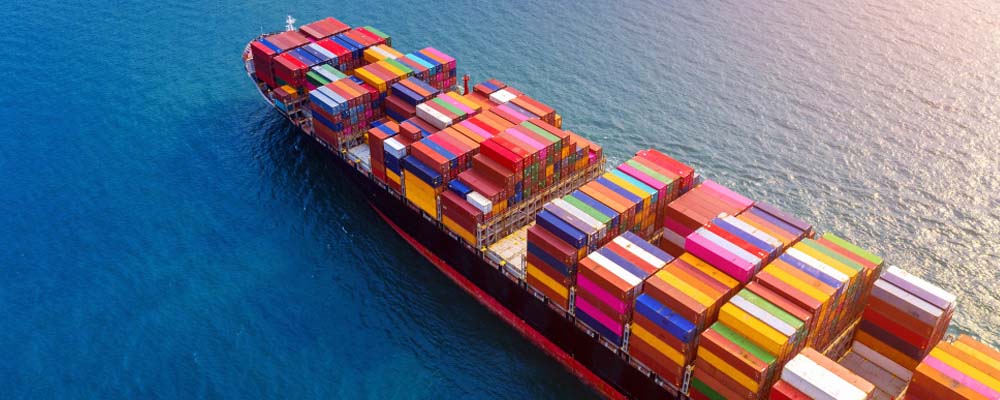
When shipping containers to Mexico, navigating customs, selecting reliable carriers, and adhering to regulatory compliance are crucial for ensuring smooth and efficient transit. With the rise in cross-border trade between the United States and Mexico, knowing the right steps, legal requirements, and best practices is invaluable for freight forwarders, logistics providers, importers, and exporters. This ultimate guide covers the essentials, from choosing the right shipping method to understanding Mexico’s import regulations, helping businesses streamline their container shipping processes.
Understanding Container Shipping Options
When shipping to Mexico, selecting the right shipping method based on volume, urgency, and cost considerations is critical. Here are three main container shipping options:
- Full Container Load (FCL): Ideal for businesses with high-volume shipments that can fill an entire container. FCL is cost-effective for bulk cargo and minimizes handling since the container remains sealed until it reaches its destination.
- Less Than Container Load (LCL): Suitable for smaller shipments, LCL involves sharing container space with other cargo. While it’s more affordable for small loads, multiple handling steps can increase the risk of delays.
- Intermodal Shipping: This method combines various transport modes, such as trucks, trains, and ships, offering flexibility and potential cost savings. It’s commonly used for shipments from the U.S. to Mexico via rail and road.
Key Considerations Before Shipping to Mexico
When planning container shipments to Mexico, consider these essential factors:
- Customs Procedures: Familiarize yourself with Mexican customs regulations to avoid delays and ensure compliance.
- Shipping Routes and Lead Times: Consider different routes and transit times. Shipments via the U.S.-Mexico border may offer shorter lead times.
- Weather and Seasonal Demand: Weather and high-traffic seasons, like peak holiday times, can impact shipping timelines and costs.
Types of Containers and Their Uses
Choosing the correct container type based on cargo needs helps protect goods and reduce costs:
- Standard Dry Containers (20ft, 40ft): Used for general cargo without temperature requirements.
- Refrigerated Containers: Essential for perishable goods, they maintain a specific temperature during transit.
- Open-Top Containers: Suited for oversized cargo that can’t fit in standard containers.
- Flat Rack Containers: Used for heavy machinery or vehicles that need secure support.
- Tank Containers: Perfect for safely transporting liquids, chemicals, and gases.
Selecting the right container ensures goods are transported safely and minimizes the need for special handling, reducing overall costs.
 Shipping Routes: Sea, Land, and Air
Shipping Routes: Sea, Land, and Air
Shipping containers to Mexico can involve sea, land, or air transportation, each with distinct advantages:
- Sea Freight: Sea routes are cost-effective for large shipments, though they come with longer transit times. Major Mexican ports like Veracruz, Manzanillo, and Lázaro Cárdenas serve as entry points for ocean shipments.
- Land Freight: Often the preferred choice for cross-border trade with the U.S., land freight via rail and truck is ideal for regional deliveries due to its flexibility and shorter lead times. Major entry points include Laredo, Texas, and San Diego, California.
- Air Freight: For urgent, high-value shipments, air freight provides the fastest transit times. However, it comes with higher costs and is better suited for smaller, high-priority goods.
Choosing the best route depends on the nature of goods, delivery deadlines, and budget.
Customs Regulations and Compliance in Mexico
Navigating Mexican customs is essential for smooth shipment processing:
- Import Permits: Depending on the type of goods, specific import permits may be required. Verify these with the Mexican customs authority (SAT).
- Certificates of Origin: Many shipments to Mexico can benefit from reduced tariffs under trade agreements like the USMCA. A Certificate of Origin proves the goods meet origin criteria for preferential treatment.
- Customs Brokers: Hiring a licensed customs broker can help streamline compliance, especially for businesses unfamiliar with Mexican import laws. Brokers assist with documentation and ensure regulatory adherence.
Compliance with Mexican customs laws prevents delays, penalties, and potential shipment seizures.
Documentation Requirements for Container Shipping
Proper documentation is the backbone of efficient container shipping. Here’s a list of crucial documents:
- Bill of Lading (BOL): Serves as a shipment receipt, confirming goods are in transit and specifying their destination.
- Commercial Invoice: Provides details on the goods’ value, quantity, and description. It’s vital for customs valuation.
- Packing List: Breaks down the contents of the shipment, aiding customs in inspections.
- Certificate of Origin: Required for USMCA benefits, proving that goods originated in the U.S., Canada, or Mexico.
- Import Permits and Licenses: Certain goods need additional permits (e.g., food, electronics).
Each document ensures customs compliance, so double-checking them is crucial for smooth processing.
Customs Duties and Taxes
Understanding Mexico’s import duties and taxes is critical to cost management:
- General Import Tax (IGI): Based on the Harmonized System Code (HS Code) of the goods, IGI rates vary depending on the product’s classification.
- Value-Added Tax (VAT): Imported goods are subject to Mexico’s VAT rate, generally around 16%.
- Customs Processing Fee (DTA): Applied to the customs clearance process, this fee is calculated as a percentage of the goods’ declared value.
- USMCA Exemptions: The USMCA allows tariff-free movement for goods originating in the U.S., Canada, and Mexico, provided they meet specific requirements.
Consulting with a customs broker can help clarify taxes and fees, enabling accurate cost forecasting.
Tips for Choosing Reliable Logistics Providers
Working with a reliable logistics provider or freight forwarder can simplify container shipping:
- Experience in Mexican Shipping: Look for providers with a proven track record in cross-border logistics, as they’re better equipped to navigate Mexican regulations.
- Customs Brokerage Services: A provider with in-house customs brokerage services can streamline documentation and customs processing.
- Insurance Options: Ensure the provider offers cargo insurance to safeguard goods during transit.
- Visibility and Tracking Technology: Select a provider offering real-time shipment tracking to enhance transparency and control over the logistics process.
Reviewing providers’ services and customer feedback can help you find the best partner for shipping to Mexico.
 Optimizing Costs for Container Shipping
Optimizing Costs for Container Shipping
Cost optimization is key to maintaining competitive pricing. Here are strategies to reduce expenses:
- Negotiate Rates with Carriers: Long-term contracts often secure better rates. It’s beneficial to negotiate with carriers, especially if you have regular shipments.
- Optimize Container Utilization: Ensuring containers are filled to capacity reduces per-unit shipping costs. This approach is particularly effective for high-volume shippers.
- Leverage Free Trade Agreements: The USMCA can significantly lower costs on qualifying goods, so verify if your cargo meets origin requirements.
- Choose the Right Container Type: Selecting the container type that fits your cargo’s needs minimizes unnecessary expenses for special equipment.
Effective cost management improves profitability and competitiveness in the Mexican market.
Tracking and Managing Shipments
Real-time tracking helps importers and exporters monitor shipments and anticipate issues:
- Container Tracking Systems: Many logistics providers offer tracking tools that provide up-to-date information on container locations, estimated arrival times, and any delays.
- Supply Chain Management Software: SCM software can help optimize inventory, manage orders, and anticipate lead times more accurately, providing a holistic view of the entire shipment process.
- Automated Notifications: Automated alerts for milestones like border crossings or customs clearance can improve planning and reduce the need for manual follow-ups.
Having reliable tracking and management systems in place ensures greater control over your shipments and better customer service.
 Conclusion
Conclusion
Shipping containers to Mexico involves a thorough understanding of various factors, from choosing the right shipping method and container type to ensuring customs compliance and managing costs. By following the best practices outlined in this guide, logistics providers, freight forwarders, and importers can improve their shipping processes and reduce delays and expenses.
Whether you’re a manufacturer aiming to enter the Mexican market or a freight forwarder managing cross-border logistics, adopting the strategies in this guide will help streamline your operations and enhance your competitive edge. Remember, thorough planning and knowledgeable partners are key to successful and cost-effective shipping to Mexico.




 Shipping Routes: Sea, Land, and Air
Shipping Routes: Sea, Land, and Air Optimizing Costs for Container Shipping
Optimizing Costs for Container Shipping Conclusion
Conclusion



